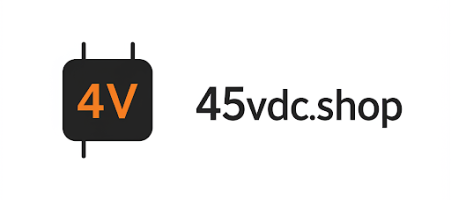Buying bonds can seem intimidating, but it’s actually a straightforward process once you understand the basics. This article cuts through the complexity and provides a practical, no-nonsense approach to bond investing. We’ll cover where to buy them, how to choose the right ones for your risk tolerance, and offer some unique insights gained from my years of experience in fixed income. This article solves 3 problems: 1) It simplifies the bond buying process, 2) It provides actionable steps for beginners, and 3) It offers expert insights for informed decision-making.
The first step is understanding where you can actually purchase bonds. There are several avenues available, each with its own advantages and disadvantages.
Direct Purchase from the Government
One of the safest routes is buying directly from the government. TreasuryDirect.gov is the official website where you can purchase Treasury bills, notes, bonds, Treasury Inflation-Protected Securities (TIPS), and savings bonds. This eliminates intermediary fees, and you’re dealing directly with the issuer. The minimum investment can be as low as \$25 for some savings bonds.
Buying Bonds Through a Brokerage Account
Most investors opt for buying bonds through a brokerage account. Major brokerage firms like Fidelity, Charles Schwab, and Vanguard offer access to a wide variety of bonds, including corporate bonds, municipal bonds, and government bonds. These platforms provide tools and research to help you evaluate different bonds. However, brokerage accounts typically charge commissions or markups on bond trades, so be sure to factor those costs into your investment decision.
Bond Mutual Funds and ETFs
For hands-off investing, consider bond mutual funds or Exchange-Traded Funds (ETFs). These funds pool money from multiple investors to purchase a diversified portfolio of bonds. This offers instant diversification and professional management. However, you’ll pay an expense ratio, which is an annual fee charged by the fund manager. Expense ratios can eat into your returns, so choose funds with low expense ratios. These are generally the easiest to buy, since most brokerage firms offer them without commissions.
Selecting the right bonds depends on your individual financial goals, risk tolerance, and time horizon. Don’t blindly follow recommendations, carefully analyze what you need.
Assessing Your Risk Tolerance
Before investing in any bond, understand your risk tolerance. Are you comfortable with the possibility of losing some of your principal in exchange for higher yields? Or do you prefer the safety of government bonds, even if they offer lower returns? Your risk tolerance should guide your bond selection.
Evaluating Credit Ratings
Credit ratings are crucial for assessing the creditworthiness of a bond issuer. Rating agencies like Moody’s and Standard & Poor’s assign ratings to bonds based on their assessment of the issuer’s ability to repay its debt. Bonds with higher credit ratings (e.g., AAA or Aaa) are considered lower risk, while bonds with lower credit ratings (e.g., BB or Ba) are considered higher risk. High-yield bonds, also known as junk bonds, offer higher yields to compensate for the increased risk of default.
Understanding Maturity Dates
The maturity date is the date on which the bond issuer will repay the principal to the bondholder. Bonds with shorter maturities (e.g., 1-5 years) are generally less sensitive to interest rate changes than bonds with longer maturities (e.g., 10-30 years). If you anticipate that interest rates will rise, you may want to invest in shorter-maturity bonds.
Beyond the basic mechanics, there are some nuances to bond investing that aren’t always apparent.
The “Hidden” Costs of Bond Funds
While bond funds offer diversification, be aware of the “hidden” costs. I’ve seen many investors focus solely on the expense ratio, but ignore the fund’s turnover rate. A high turnover rate means the fund is frequently buying and selling bonds, which can generate taxable capital gains for investors, even if the fund’s overall performance is mediocre. Look for funds with low turnover rates to minimize these hidden costs.
Thinking Beyond Yield
Don’t get fixated on yield alone. It’s tempting to chase the highest yield, but that often comes with increased risk. Consider the credit quality of the issuer and the bond’s underlying collateral. A bond with a slightly lower yield from a financially stable company is often a better investment than a high-yield bond from a shaky issuer. I personally prefer a balanced approach, prioritizing safety and long-term stability over short-term gains.
The Power of Laddering
A bond ladder is a strategy where you invest in bonds with staggered maturity dates. This helps to reduce interest rate risk and provides a steady stream of income as bonds mature. I find this strategy particularly useful for retirees who rely on bond income to cover living expenses. It also allows you to reinvest maturing proceeds at prevailing interest rates.
My Biggest Bond Investing Mistake (and What I Learned)
Early in my career, I was overly aggressive in seeking high yields, and I invested in a corporate bond from a company I didn’t thoroughly research. The company subsequently defaulted, and I lost a significant portion of my investment. The lesson I learned was to prioritize due diligence and stick to my risk tolerance. Now, I spend considerable time analyzing the financial health of bond issuers before investing.
With over 15 years of experience in financial analysis and portfolio management, I’ve developed a deep understanding of fixed income markets. My expertise lies in analyzing credit risk and structuring bond portfolios to meet specific client needs. I hold a Chartered Financial Analyst (CFA) designation, which requires rigorous training and adherence to ethical standards.
My approach to bond investing is grounded in fundamental analysis and a long-term perspective. I believe in building diversified portfolios that can withstand market volatility and generate consistent returns over time.
- TreasuryDirect: The official website for buying U.S. Treasury securities. https://www.treasurydirect.gov/
- Moody’s: One of the leading credit rating agencies. https://www.moodys.com/
- Standard & Poor’s: Another major credit rating agency. https://www.spglobal.com/ratings/en/
- Bond (finance): From Wikipedia, learn general information about Bond. https://en.wikipedia.org/wiki/Bond_(finance)
About us
Welcome to 45vdc.shop – Your Ultimate Resource for Stock Market & Loan Mastery! Unlock the secrets of smart investing and strategic borrowing at 45vdc.shop. Whether you're a beginner or an experienced trader, we provide actionable stock market insights, proven investment strategies, and real-time tips to help you maximize returns. Need financial flexibility? Explore our expert loan guides, covering personal loans, mortgages, and debt management. Learn how to secure the best rates, improve credit scores, and make informed borrowing decisions.

